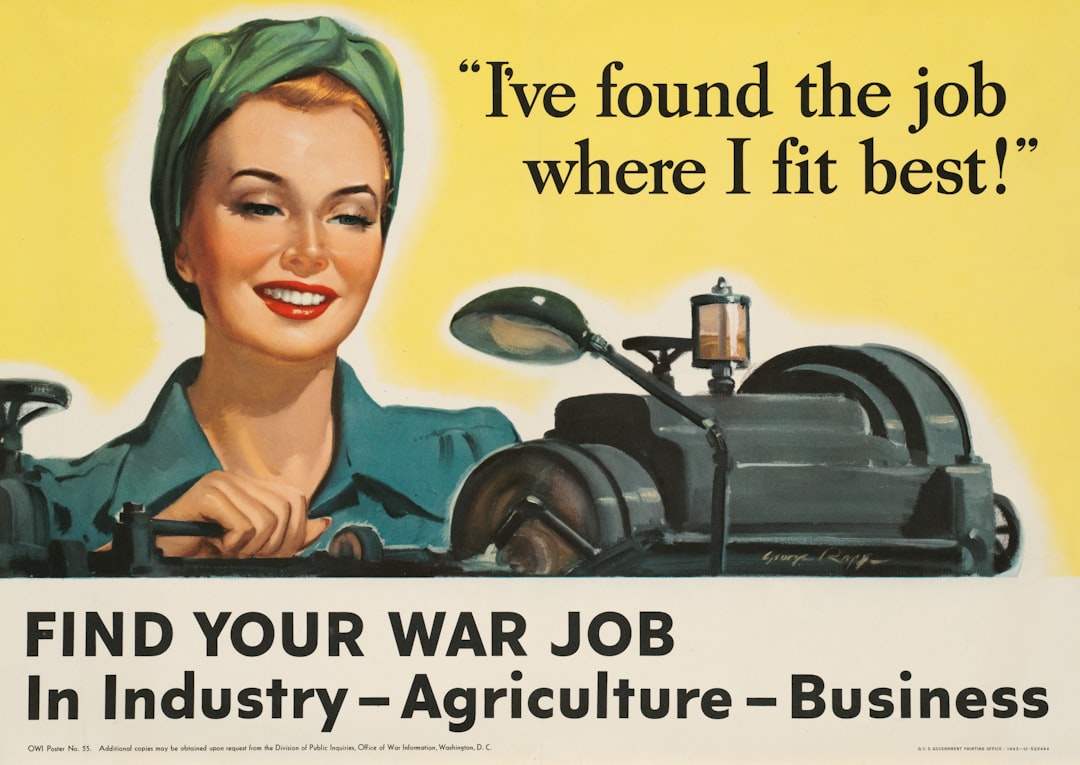Drafting jobs have long been a cornerstone of various industries, including architecture, engineering, and manufacturing. As a drafter, you are responsible for creating detailed technical drawings and plans that serve as blueprints for construction and production.
The role of a drafter requires a keen eye for detail, a strong understanding of design principles, and proficiency in various drafting software tools. In recent years, the landscape of drafting jobs has undergone significant changes due to advancements in technology. The introduction of computer-aided design (CAD) software revolutionized the way drafters work, allowing for greater precision and efficiency.
However, the rise of artificial intelligence (AI) is poised to further transform the drafting profession. As you navigate this evolving field, it is crucial to understand the current role of AI in drafting and how it may shape your career in the future.
Key Takeaways
- Drafting jobs are evolving with the integration of AI technology, impacting traditional roles and creating new opportunities.
- AI is currently used in drafting for tasks such as automated design generation, error detection, and optimization of designs.
- Advantages of AI in drafting include increased efficiency and accuracy, while disadvantages include potential job displacement and overreliance on technology.
- The impact of AI on traditional drafting jobs is leading to a shift in required skills and the need for drafters to adapt to new technologies.
- The future of drafting jobs in the age of AI will require drafters to develop a combination of technical and soft skills, as well as a willingness to adapt to new technologies and workflows.
Current Role of AI in Drafting
AI is increasingly becoming an integral part of the drafting process, enhancing the capabilities of drafters like you. With machine learning algorithms and advanced data analysis, AI can automate repetitive tasks, streamline workflows, and even generate design options based on specific parameters. This technology allows you to focus on more creative aspects of your work while leaving mundane tasks to AI systems.
For instance, AI can quickly analyze vast amounts of data to suggest optimal design solutions or identify potential issues before they arise. Moreover, AI-powered tools can assist in creating 3D models and simulations that provide a more comprehensive view of a project. These tools can help you visualize how different elements interact within a design, making it easier to identify potential conflicts or inefficiencies.
As AI continues to evolve, its role in drafting will likely expand, offering new opportunities for innovation and collaboration between human drafters and intelligent systems.
Advantages and Disadvantages of AI in Drafting

The integration of AI into drafting comes with a range of advantages that can significantly enhance your work experience. One of the most notable benefits is increased efficiency. By automating routine tasks such as dimensioning or generating standard details, AI allows you to complete projects more quickly and with fewer errors.
This efficiency not only saves time but also reduces costs for clients, making your services more competitive in the market. However, the rise of AI also presents challenges that you must consider. One major concern is the potential for job displacement.
As AI systems become more capable of performing tasks traditionally handled by human drafters, there is a fear that some positions may become obsolete. Additionally, reliance on AI could lead to a decline in critical thinking and problem-solving skills among drafters if they become overly dependent on technology for design decisions. Balancing the benefits of AI with these potential drawbacks will be essential as you navigate your career in drafting.
The Impact of AI on Traditional Drafting Jobs
| Impact of AI on Traditional Drafting Jobs | Metrics |
|---|---|
| Reduction in manual drafting tasks | 30% |
| Increased efficiency in design process | 50% |
| Decrease in drafting errors | 40% |
| Shift in job roles towards design optimization | 70% |
The impact of AI on traditional drafting jobs is profound and multifaceted. On one hand, AI can enhance your capabilities as a drafter by providing tools that improve accuracy and speed. On the other hand, it raises questions about the future relevance of certain drafting roles.
For instance, entry-level positions that primarily involve manual drafting tasks may be at risk as AI systems take over these functions. This shift could lead to a reduction in job opportunities for new entrants into the field. Conversely, the demand for skilled drafters who can leverage AI tools effectively is likely to increase.
As projects become more complex and require advanced design solutions, your ability to integrate AI into your workflow will set you apart from others in the industry. Embracing this technology can position you as a valuable asset to employers who seek innovative approaches to design challenges.
The Future of Drafting Jobs in the Age of AI
Looking ahead, the future of drafting jobs in the age of AI is both exciting and uncertain. While some traditional roles may diminish, new opportunities will emerge as industries adapt to technological advancements. You may find yourself working alongside AI systems that assist in generating designs or analyzing project data, allowing you to focus on higher-level decision-making and creative problem-solving.
Moreover, as industries increasingly prioritize sustainability and efficiency, your role as a drafter will evolve to encompass new responsibilities. You may be tasked with integrating eco-friendly materials or optimizing designs for energy efficiency, all while utilizing AI tools to enhance your work. The key to thriving in this changing landscape will be your willingness to embrace new technologies and continuously update your skills.
Skills and Training Needed for Future Drafting Jobs

To remain competitive in the evolving field of drafting, you will need to develop a diverse skill set that includes both technical proficiency and soft skills. Familiarity with advanced CAD software is essential, but understanding how to leverage AI tools will become increasingly important as well. You should seek out training programs or courses that focus on AI applications in design and drafting to stay ahead of the curve.
In addition to technical skills, soft skills such as communication, collaboration, and critical thinking will be vital in the future job market. As projects become more interdisciplinary, your ability to work effectively with architects, engineers, and other professionals will enhance your value as a drafter. Emphasizing these skills in your professional development will prepare you for the collaborative nature of future drafting jobs.
Job Prospects for Drafters in the Face of AI
The job prospects for drafters in the face of AI are complex and depend on various factors, including industry demand and individual adaptability. While some entry-level positions may decline due to automation, there will still be a strong demand for skilled drafters who can navigate both traditional drafting techniques and modern technology. Industries such as construction, manufacturing, and product design will continue to require drafters who can create detailed plans and specifications.
Furthermore, as businesses recognize the value of integrating AI into their workflows, they will seek professionals who can bridge the gap between technology and design. Your ability to understand both drafting principles and AI applications will make you an attractive candidate for employers looking to innovate their processes. By staying informed about industry trends and continuously enhancing your skills, you can position yourself favorably in this evolving job market.
How AI Can Enhance the Role of Drafters
AI has the potential to enhance your role as a drafter by providing tools that improve accuracy and creativity in design processes. For example, generative design algorithms can analyze various parameters such as materials, costs, and environmental impact to propose multiple design options that meet specific criteria. This capability allows you to explore innovative solutions that may not have been considered otherwise.
Additionally, AI can assist in quality control by identifying inconsistencies or errors in designs before they reach the construction phase. By catching potential issues early on, you can save time and resources while ensuring that projects run smoothly. Embracing these enhancements will not only improve your efficiency but also elevate the quality of your work.
Ethical and Legal Considerations of AI in Drafting
As AI becomes more prevalent in drafting, ethical and legal considerations must be addressed. One significant concern is data privacy; as AI systems analyze vast amounts of information to generate designs or recommendations, ensuring that sensitive data is protected becomes paramount. You must be aware of regulations surrounding data usage and ensure compliance with industry standards.
Moreover, intellectual property issues may arise as AI-generated designs challenge traditional notions of authorship and ownership. Understanding how copyright laws apply to AI-generated content will be crucial as you navigate this new landscape. Engaging with these ethical considerations will not only protect your work but also contribute to responsible practices within the industry.
Strategies for Drafters to Adapt to the Rise of AI
To adapt successfully to the rise of AI in drafting, you should consider implementing several strategies that enhance your professional development. First, invest time in learning about emerging technologies related to drafting and design. Online courses, workshops, or industry conferences can provide valuable insights into how AI is reshaping the field.
Second, cultivate a mindset of continuous learning and adaptability. The ability to embrace change and seek out new opportunities will be essential as technology evolves. Networking with other professionals in your field can also provide support and inspiration as you navigate these changes together.
Navigating the Future of Drafting Jobs with AI
In conclusion, navigating the future of drafting jobs in the age of AI presents both challenges and opportunities for professionals like you. While traditional roles may evolve or diminish due to automation, new avenues for innovation and collaboration are emerging. By embracing technology, continuously updating your skills, and remaining adaptable, you can position yourself favorably in this dynamic landscape.
As you move forward in your career as a drafter, remember that AI is not merely a replacement for human creativity but rather a tool that can enhance your capabilities. By leveraging these advancements responsibly and ethically, you can contribute to a future where human ingenuity and artificial intelligence work hand-in-hand to create exceptional designs that meet the needs of an ever-changing world.
The rise of artificial intelligence has sparked widespread discussions about its potential impact on various job sectors, including drafting jobs. As AI technology continues to evolve, many are concerned about the future of traditional drafting roles and whether they will be replaced by automated systems. An insightful article that delves into this topic can be found on How Wealth Grows, which explores the broader implications of AI on the workforce and the economy. For a deeper understanding of how AI might influence drafting jobs and other professions, you can read more in this related article.
FAQs
What is AI drafting?
AI drafting refers to the use of artificial intelligence technology to automate the process of creating technical drawings, blueprints, and other design documents. This technology can analyze and interpret design requirements, generate 2D and 3D models, and even make design recommendations.
Will AI take drafting jobs?
AI technology has the potential to automate certain aspects of drafting work, such as repetitive tasks and basic design generation. However, it is unlikely to completely replace human drafters. Instead, AI is more likely to augment the work of drafters by handling routine tasks, allowing human drafters to focus on more complex and creative aspects of the design process.
How will AI impact the drafting industry?
AI technology is expected to streamline the drafting process, improve accuracy, and increase productivity. It can help reduce the time and effort required for certain drafting tasks, leading to cost savings and faster project completion. Additionally, AI can provide valuable insights and recommendations to human drafters, enhancing the overall quality of design work.
What skills will be important for drafters in the age of AI?
As AI technology becomes more prevalent in the drafting industry, drafters will need to develop skills in working with AI tools and software. This may include understanding how to integrate AI-generated designs into their work, interpreting AI-generated recommendations, and leveraging AI to enhance their own design capabilities. Additionally, skills in creativity, problem-solving, and critical thinking will remain important for drafters to excel in their roles alongside AI.
